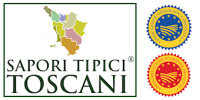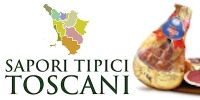Our network:
Saturday 27 July 2024
Fonte Gaia fountain
The magnificent Fonte Gaia fountain, designed by Jacopo della Quercia around 1419, adorns the higher part of Piazza del Campo. The fountain we see today stands on the exact spot occupied by a previously existing fountain in 1346. The water that feeds the fountain travels from a spring in the nearby countryside through 25 kilometres of underground passages known as Bottini, built in the Middle Ages and named thus on account of their barrel vaulting.
The fountain is named Fonte Gaia on account of the great celebrations that took place when the inhabitants of Siena saw the water gushing out from the fountain for the first time. Although Jacopo della Quercia received the commission to design the fountain from the Comune in 1409, construction did not actually take place until between 1414 and 1419 because of the sculptor’s prior engagements in Lucca, where he was completing the tombstones of Lorenzo Trenta and his wife in the Trenta family chapel at San Frediano in Lucca.
Della Quercia drew the inspiration for his design of the fountain from the traditional designs of Medieval Senese public fountains. A large, altar-like rectangular basin is surrounded on three sides by a high parapet. The sides are decorated with reliefs of The Creation of Adam and The Flight from the Garden of Eden. Two female figures adorn the front two columns, traditionally believed to represent Rea Silvia and Acca Larentia, in remembrance of Siena’s legendary associations with Rome. The long section of the fountain is adorned at the centre with a Madonna and Child, surrounded by allegories of the Virtues.
Although in poor condition, the sculptures are still a clear indication of the originality and power of Jacopo della Quercia, who has managed to capture an extraordinary sense of movement in so few simple lines.
By the mid-19th century the fountain was in such precarious condition that it was decided to replace the original with a copy. Tito Sarrocchi was commissioned to sculpt the new fountain in 1858 and he completed it in 1869, albeit without the two statues on the final pilasters. What remains of the original fountain by Jacopo della Quercia is kept in the Loggia of the Palazzo Pubblico.
Restoration works on the original fountain were started in the early 1990s, under the patronage of Florence’s Opificio delle Pietre Dure in collaboration with the Siena town council and the Sovrintendenze dei Beni Architettonici e Ambientali e Artistici e Storici di Siena. After a detailed analysis of the remaining parts, the project involves a piece by piece restoration, with the entire work eventually reassembled within a protected structure.
The fountain is named Fonte Gaia on account of the great celebrations that took place when the inhabitants of Siena saw the water gushing out from the fountain for the first time. Although Jacopo della Quercia received the commission to design the fountain from the Comune in 1409, construction did not actually take place until between 1414 and 1419 because of the sculptor’s prior engagements in Lucca, where he was completing the tombstones of Lorenzo Trenta and his wife in the Trenta family chapel at San Frediano in Lucca.
Della Quercia drew the inspiration for his design of the fountain from the traditional designs of Medieval Senese public fountains. A large, altar-like rectangular basin is surrounded on three sides by a high parapet. The sides are decorated with reliefs of The Creation of Adam and The Flight from the Garden of Eden. Two female figures adorn the front two columns, traditionally believed to represent Rea Silvia and Acca Larentia, in remembrance of Siena’s legendary associations with Rome. The long section of the fountain is adorned at the centre with a Madonna and Child, surrounded by allegories of the Virtues.
Although in poor condition, the sculptures are still a clear indication of the originality and power of Jacopo della Quercia, who has managed to capture an extraordinary sense of movement in so few simple lines.
By the mid-19th century the fountain was in such precarious condition that it was decided to replace the original with a copy. Tito Sarrocchi was commissioned to sculpt the new fountain in 1858 and he completed it in 1869, albeit without the two statues on the final pilasters. What remains of the original fountain by Jacopo della Quercia is kept in the Loggia of the Palazzo Pubblico.
Restoration works on the original fountain were started in the early 1990s, under the patronage of Florence’s Opificio delle Pietre Dure in collaboration with the Siena town council and the Sovrintendenze dei Beni Architettonici e Ambientali e Artistici e Storici di Siena. After a detailed analysis of the remaining parts, the project involves a piece by piece restoration, with the entire work eventually reassembled within a protected structure.
Booking.com
• Siena in the Renaissance
• Siena in the Middle Ages
• Siena in Antiquity
• Town Map Siena
• Farm Holidays and Country Houses
• Residence, Apartments
• Bed & Breakfasts
• Historical Residences
• Last Minute Siena
• Restaurants
• Pubs & Wine Bar
• University for Foreigners
• Palazzo Chigi-Saracini
• Palazzo d’Elci degli Alessi
• Loggia della Mercanzia
• Palazzo Sansedoni
• Palazzo Chigi-Zondadari
• Fonte Gaia fountain
• Carthusian Monastery of Pontignano
• Forte di Santa Barbara
• The Duomo – The Cathedral of the Assunta
• Church of the Osservanza
• The Oratory of San Bernardino
• Church of San Francesco
• Short Biography of St Catherine of Siena
• St Catherine Sanctuary
• Church of S. Niccolò al Carmine
• Bologna-Buonsignori museum
• Accademia dei Fisiocritici
• I Musei Senesi
• The Palazzo Pubblico and the Torre del Mangia
• Piazza del Campo
• The Montagnola Senese and the Fortified Village of Sovicille
• The Castles of Belcaro and Quattro Torri
General information
• Town map • Siena in the Renaissance
• Siena in the Middle Ages
• Siena in Antiquity
Transport in town
• Map of Hotels in Siena • Town Map Siena
Transport out of town
• Train services
Where to Stay
• Hotels • Farm Holidays and Country Houses
• Residence, Apartments
• Bed & Breakfasts
• Historical Residences
OFFERS & LAST MINUTE
• Reservation Services Siena • Last Minute Siena
Where to eat and drink
• Disco Dancing • Restaurants
• Pubs & Wine Bar
Education
• Siena University • University for Foreigners
Art and monuments
• Palazzo Piccolomini and Palazzo delle Papesse • Palazzo Chigi-Saracini
• Palazzo d’Elci degli Alessi
• Loggia della Mercanzia
• Palazzo Sansedoni
• Palazzo Chigi-Zondadari
• Fonte Gaia fountain
• Carthusian Monastery of Pontignano
• Forte di Santa Barbara
Art and religion
• Church of Sant’Agostino • The Duomo – The Cathedral of the Assunta
• Church of the Osservanza
• The Oratory of San Bernardino
• Church of San Francesco
• Short Biography of St Catherine of Siena
• St Catherine Sanctuary
• Church of S. Niccolò al Carmine
Museums and galleries
• The Museo Civico • Bologna-Buonsignori museum
• Accademia dei Fisiocritici
• I Musei Senesi
Art and tourist attractions
• Cappella di Piazza • The Palazzo Pubblico and the Torre del Mangia
• Piazza del Campo
• The Montagnola Senese and the Fortified Village of Sovicille
• The Castles of Belcaro and Quattro Torri
Booking.com
• The July and August Palio
• The Contrade
• The Days of the Palio
• The Drappellone
• The Eve of the Palio
• The Corteo Storico Procession
• The Race
• The Patron Saint and Oratory of Each Contrada
• Weekly Appointments in each Contrada from April onwards
• Croce del Travaglio Place
• From Piazza del Campo to the Duomo Along Via di Città
• The Curves of Piazza del Campo
• Costarella dei Barbieri street
• Borgo d’Ovile
• The Terzo of Camollia – main streets
• Casato di Sopra e Casato di Sotto
• Terzo di San Martino district
• The Terzo di Città District - Via Stalloreggi, Via San Quirico
• The Terzo di Città District – The Pinacoteca Nazionale
• Golf courses in Siena and Tuscany
• Wedding in Tuscany - Siena area
• San Casciano dei Bagni
• Chianciano Terme
• Bagni San Filippo
• Bagno Vignoni
• Rapolano Terme - Baths of San Giovanni and Baths of the Antica Querciolaia
• The Countryside around Siena and its Thermal Water Springs
• SkiPass Monte Amiata
• WebCam sul Monte Amiata
• Meteo Monte Amiata
• The Val d’Orcia and Its Main Towns
• Pienza - the old town centre
• Montepulciano - the old town centre
• San Quirico d’Orcia - the old town centre
• Montalcino and the Land of Brunello
• The Abbey of Monte Oliveto Maggiore and the Crete
• The Crete Senesi
• Castellina in Chianti and the Via Chiantigiana Towards Siena
• Siena and Southern Chianti - from the Castle of Montalto to the Castle of Brolio and on to the Castle of Meleto
• The Chianti Hills - Monte Calvo, Monte Luco and Monte San Michele
• Cortona and the Valdichiana
• San Gimignano - The old town centre and its major sights
• The Val d’Elsa - Monteriggioni and Colle di Val d’Elsa
• Along the Old Via Francigena
• Oleum Evo online selling
• Sapori Tipici Italiani buy online now
• il Prosciutto Cotto
The Palio of Siena
• The Origins • The July and August Palio
• The Contrade
• The Days of the Palio
• The Drappellone
• The Eve of the Palio
• The Corteo Storico Procession
• The Race
• The Patron Saint and Oratory of Each Contrada
• Weekly Appointments in each Contrada from April onwards
Sightseeing
• Via di Città (formerly Via Galgaria), Siena’s Most Elegant Street • Croce del Travaglio Place
• From Piazza del Campo to the Duomo Along Via di Città
• The Curves of Piazza del Campo
• Costarella dei Barbieri street
• Borgo d’Ovile
• The Terzo of Camollia – main streets
• Casato di Sopra e Casato di Sotto
• Terzo di San Martino district
• The Terzo di Città District - Via Stalloreggi, Via San Quirico
• The Terzo di Città District – The Pinacoteca Nazionale
What to see & do
• Wedding in Siena • Golf courses in Siena and Tuscany
• Wedding in Tuscany - Siena area
• San Casciano dei Bagni
• Chianciano Terme
• Bagni San Filippo
• Bagno Vignoni
• Rapolano Terme - Baths of San Giovanni and Baths of the Antica Querciolaia
• The Countryside around Siena and its Thermal Water Springs
Monte Amiata
• Monte Amiata - nature tourism the year round • SkiPass Monte Amiata
• WebCam sul Monte Amiata
• Meteo Monte Amiata
Specials - Out of town
• Gift Ideas for traveling • The Val d’Orcia and Its Main Towns
• Pienza - the old town centre
• Montepulciano - the old town centre
• San Quirico d’Orcia - the old town centre
• Montalcino and the Land of Brunello
• The Abbey of Monte Oliveto Maggiore and the Crete
• The Crete Senesi
• Castellina in Chianti and the Via Chiantigiana Towards Siena
• Siena and Southern Chianti - from the Castle of Montalto to the Castle of Brolio and on to the Castle of Meleto
• The Chianti Hills - Monte Calvo, Monte Luco and Monte San Michele
• Cortona and the Valdichiana
• San Gimignano - The old town centre and its major sights
• The Val d’Elsa - Monteriggioni and Colle di Val d’Elsa
• Along the Old Via Francigena
Typical products
• Typical Tuscan flavours • Oleum Evo online selling
• Sapori Tipici Italiani buy online now
• il Prosciutto Cotto









